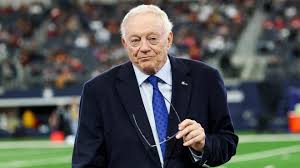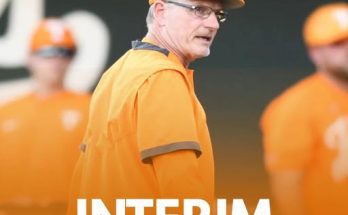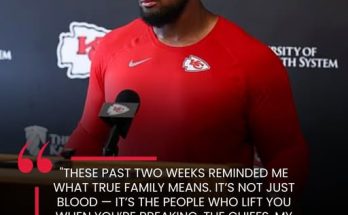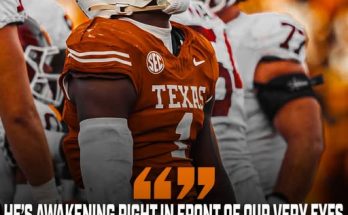It Appears that the Dallas Cowboys’ Coaching Search Is Just Another Instance of Jerry Repeating Himself
The Dallas Cowboys are no strangers to change. From the moment Jerry Jones took over as the owner of the Cowboys in 1989, the team has been shaped by his personal touch—his relentless pursuit of success, his larger-than-life persona, and his ability to make bold, often controversial decisions. But when it comes to the Cowboys’ coaching search, it often feels like Jones is stuck in a loop, repeating the same patterns and making the same mistakes.
As the Cowboys enter yet another coaching search after the departure of Mike McCarthy, fans and analysts alike are beginning to ask: Is this just another instance of Jerry repeating himself?
The recent firing of McCarthy, who served as the Cowboys’ head coach for several seasons but failed to deliver consistent playoff success, has put Jones and the organization in a familiar position. Once again, the Cowboys are looking for a head coach who can lead the team to Super Bowl glory. But as the process unfolds, there are undeniable echoes of past decisions, patterns of behavior, and the overarching question of whether Jerry Jones has learned from his previous missteps.
In this article, we’ll take a closer look at the Dallas Cowboys’ coaching search, examine the patterns that have emerged in Jones’ decision-making, and consider whether this search is merely a repeat of history or a chance for the Cowboys to finally break free from their past.
The Familiar Pattern: Jones’ Love for Big Names
For all the success and innovation that Jerry Jones has brought to the Cowboys, one of the defining characteristics of his leadership is his obsession with big names and star power. This is not a new phenomenon—since Jones became the Cowboys’ owner, he has consistently sought out high-profile head coaches, often opting for the biggest names available, even if those coaches weren’t necessarily the right fit for the job.
Perhaps the most iconic example of this was the hiring of Jimmy Johnson in 1989. Johnson, a former college coach who had made a name for himself with the Miami Hurricanes, was an unorthodox choice at the time, but he proved to be a brilliant hire, leading the Cowboys to two Super Bowl titles in the 1990s. Johnson’s success established a template for Jones: get a coach who can turn the team around and produce immediate results.
However, after Johnson’s departure in 1994, Jones seemed to go off course. The team went through a series of high-profile hires that lacked the same success, including Barry Switzer (who won a Super Bowl but never replicated Johnson’s success), Chan Gailey, and Dave Campo. These hires, while occasionally making headlines, were ultimately short-lived and failed to bring long-term success to the Cowboys.
As the years passed, Jones continued to make moves that seemed to focus more on the media circus than on the stability and chemistry needed to build a championship-winning team. In Bill Parcells, Jones sought another big name in 2003. Parcells had led the New York Giants to two Super Bowl titles and was known for his tough-love coaching style. While Parcells did lead the Cowboys to some success during his tenure, he never won a Super Bowl and departed in 2007, leaving behind more questions than answers about the Cowboys’ future.
The same can be said about Wade Phillips and Jason Garrett—two coaches with varying degrees of success, but ultimately both were unable to take the Cowboys back to Super Bowl glory. Garrett, in particular, seemed to be a product of Jones’ ongoing search for the next big thing. Garrett’s tenure, which lasted a decade, was marked by a consistent lack of playoff success and underachievement, despite having one of the most talented rosters in the NFL.
Then, of course, came the hiring of Mike McCarthy in 2020, another coach with a Super Bowl championship on his resume (from his time with the Green Bay Packers). The decision to hire McCarthy, however, was controversial from the start, as many questioned whether he was truly the right fit for the Cowboys’ offense, which had become one of the most potent in the league. McCarthy’s tenure with the Cowboys ultimately ended after a few seasons, and while the team showed flashes of potential, it became evident that McCarthy’s approach and style did not mesh with the Cowboys’ roster.
With the departure of McCarthy, the cycle has once again begun. Jerry Jones is on the hunt for his next head coach, and, as always, the focus has shifted to a big name—someone who can bring instant recognition and excitement to the team. The problem, however, is that the search for a big name rarely leads to long-term success.
Is Jerry Jones Focusing Too Much on the “Next Big Thing”?
One of the critical questions surrounding the current Cowboys’ coaching search is whether Jerry Jones is focused too much on finding the “next big thing” rather than the right coach for the long-term success of the team. Historically, Jones has gone after high-profile coaches because they make headlines, but those headlines often fade as quickly as the results on the field.
The Cowboys’ roster is undeniably talented. Dak Prescott, Micah Parsons, CeeDee Lamb, and the rest of the squad have all the pieces in place to be contenders. What the team needs now is stability and a coach who can develop the team over the long haul, rather than focusing solely on immediate results.
In Dan Quinn, the Cowboys have a coach who has proven his worth as a defensive mastermind. Kellen Moore, the offensive coordinator, has worked well with Prescott, and the team has seen steady improvement in recent seasons. Rather than going after another big name who might not fit the Cowboys’ vision, Jones might want to consider the possibility of promoting from within and giving the team’s existing coaching staff a chance to step up.
By continually searching for the next big headline, Jones risks overlooking the qualities that are truly important in a head coach: leadership, consistency, and the ability to develop players and build a championship culture over time.
The Issue of Coaching Instability
Another key issue that has plagued the Cowboys over the years is coaching instability. In the NFL, success is often built over time. A coach needs the freedom and support to implement their system and mold the team to their vision. But with the constant turnover at the head coach position, the Cowboys have never been able to establish long-term stability.
In fact, the Cowboys are currently in the midst of their fourth head coach since the departure of Jimmy Johnson in the 1990s. While the team has had occasional success—making the playoffs, winning division titles—the Cowboys have been stuck in a cycle of mediocrity. Every time a new coach is hired, the team has to start over from scratch, trying to establish a new culture and philosophy.
Coaching stability is essential to building a winning culture, and this is something the Cowboys have lacked for decades. The constant churn of coaches has not allowed the franchise to establish its identity or build the kind of consistent, long-term success that other franchises, like the New England Patriots with Bill Belichick or the Pittsburgh Steelers with Mike Tomlin, have enjoyed.
Jones’ Leadership and the Fear of Change
One of the biggest hurdles for Jerry Jones in making a successful coaching hire is his own leadership style. While Jones is a visionary in some respects, he has often been criticized for not allowing his coaches the autonomy to fully implement their vision. Over the years, Jones has been known for meddling in team decisions, particularly in the draft, personnel moves, and coaching strategies. This lack of trust in his head coaches has created a fractured relationship between ownership and coaching staff.
When Jones hired Jason Garrett, many believed it was because Garrett was someone who could be easily controlled—someone who wouldn’t challenge Jones’ authority. The same could be said about McCarthy, whose approach was often seen as too similar to Garrett’s. In both cases, the Cowboys seemed to be looking for a coach who would simply go along with Jones’ vision, rather than someone who could challenge him and truly make the team their own.
The hiring of a new head coach, therefore, isn’t just about finding the right person for the job. It’s also about the dynamic between Jones and the coach. The Cowboys need a leader who can both work with Jones and challenge him when necessary—a coach who can implement their system and take ownership of the team, without being constantly under the microscope.
A Fresh Approach?
As Jerry Jones embarks on yet another coaching search, the question remains whether he has learned from the mistakes of the past. Will he continue to chase after the next big name in the hopes of reigniting the Cowboys’ Super Bowl hopes, or will he finally recognize that stability and long-term success are built through a consistent, cohesive vision?
The answer may lie not in hiring another high-profile name, but in giving the team’s current coaching staff a chance to take the reins. It’s time for Jerry Jones to step back, allow his coaches to grow, and focus on the bigger picture: developing a culture that will lead to sustained success.
The Dallas Cowboys have a talented roster and a bright future ahead. The only thing holding them back is the lack of coaching stability and the constant search for the next quick fix. It’s time for Jerry Jones to break the cycle of repeating the past and finally give the team the leadership it needs to succeed for years to come.



